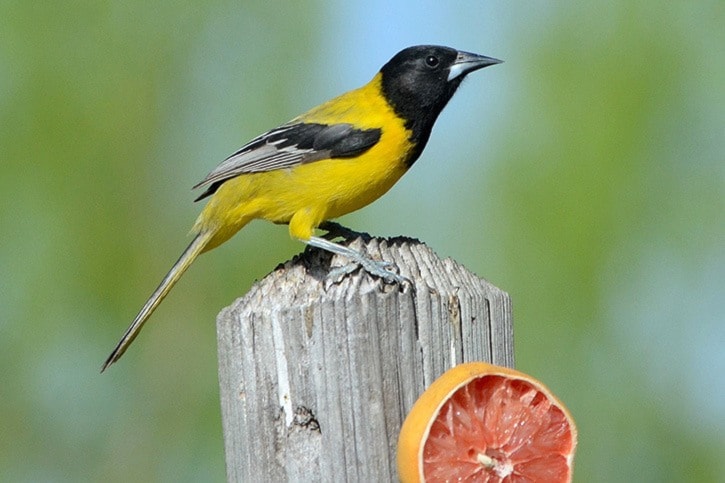As I write this article, Marie and I are in Brazos Bend State Park not far from Houston, Texas. We are making a very leisurely drive home following our usual winter in the Rio Grande Valley.
This state park is the sixth one we’ve visited in the last three or four weeks. April is “migration month” in Texas and the birding can, at times, be quite remarkable. Since we left our RV park on March 17, we have seen 240 species of birds.
Many of the small birds heading north at this time of year must fly across the Gulf of Mexico. Under normal weather conditions, this flight is rather straightforward and they find no need to stop when the reach the Texas coast. But it gets a bit more complicated (for the birds) when the winds are from the north. Under these conditions, the birds may be tired when they reach Texas and put down at the first opportunity.
Along much of the Texas coast, forest and trees are somewhat scarce, so in places where they do occur, birds may drop in huge numbers. These “hot spots” are well-known amongst birders and when the north winds come, so do the birders!
There was a north wind for two days last week. It is still early April and the migration is only just getting started, but the weather did produce some good birds. We visited LaFitte’s Cove Nature Sanctuary, in Galveston, just after the north winds. We were camped nearby so were able to make four visits in a three-day period. In total we saw 17 different species of warbler.
In talking to other birders at the site, we know that at least six other warblers we also seen during those three days. Other families, such as buntings, flycatcher, hummingbirds, and vireos will also be making the Gulf crossing in the coming days and weeks, but some of the warblers usually lead the way.
But it’s not only the forest birds and the migrants that make birding exciting along the Texas coast; the water birds are well-represented here. Most fall into one of three groups: shorebirds, long-legged waders, and gulls.
One of the parks we visited was Mustang Island State Park. This coastal park provided us with ample opportunity to visit coastal mudflats, estuaries, salt marshes, and beaches. On Mustang Island we saw 23 species of shorebirds (sandpipers and plovers etc), 11 species of waders, (herons, egrets, ibises and spoonbills), and 10 species of gulls (including gulls, terns and skimmers). We spent just three nights on Mustang Island and during that time we saw 126 species.
It is very difficult to pick favourites amongst all the species we’ve seen so far. Some are special because of their brilliant plumage, others due to their rarity, and others simply because I don’t often get a chance to see them.
When it comes to brilliant plumage there are many contenders for favourite. Even though it is very common, the Northern Cardinal is definitely a candidate. As is Green Jay, Summer Tanager, any one of the orioles, Painted Bunting, and of course, the stunning Roseate Spoonbill.
From the rarities point of view, it would be hard to surpass the Whooping Crane. The world population of wild birds stands at less than 300. From a personal point of view, I would nominate Purple Gallinule, Wood Stork and Cerulean Warbler. I have seen each of these just once or twice before. But if I had to pick one, it would have to be the Cerulean warbler.
Next week we will be spending seven nights on the Bolivar Peninsula. This location, and the mid-April timing, should provide some excellent migration birding.
